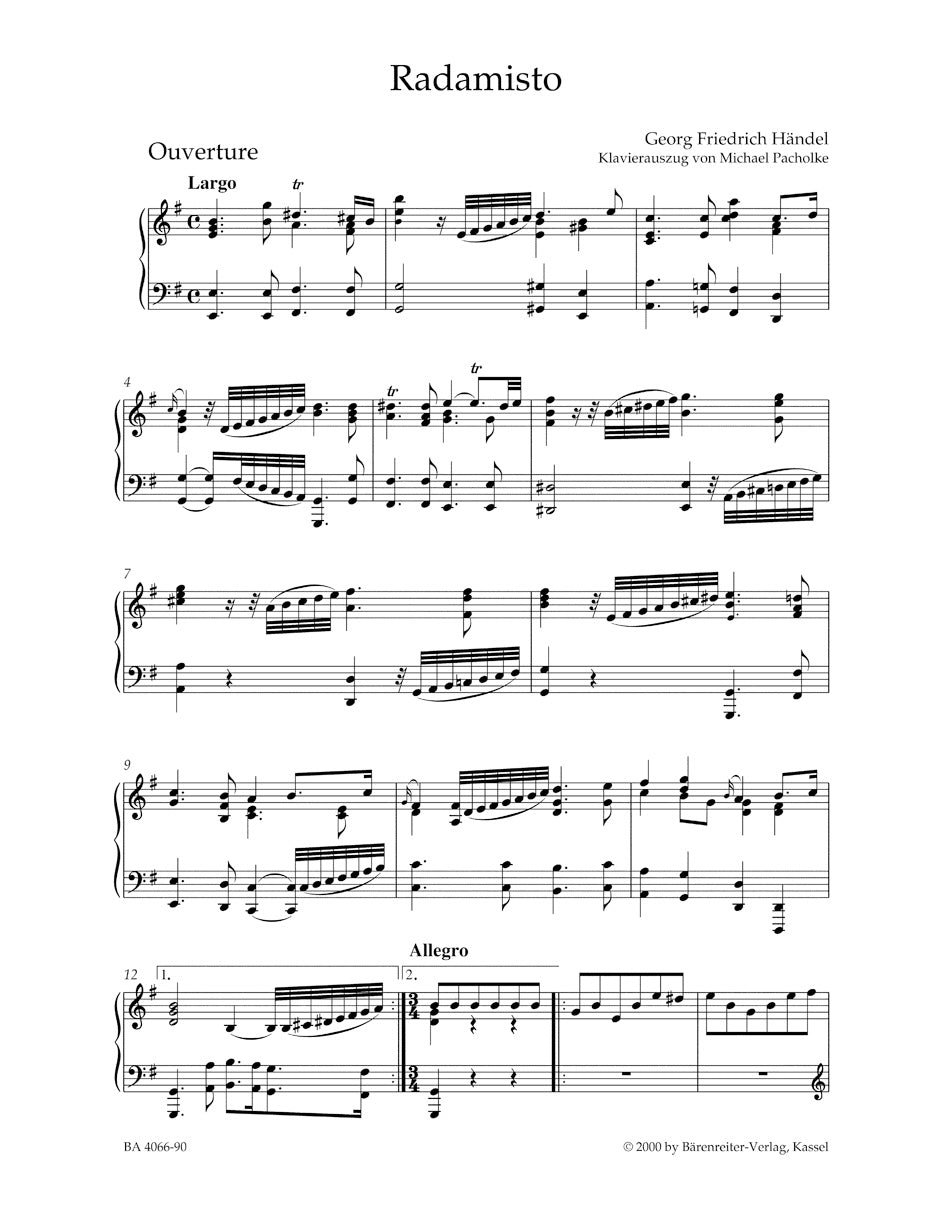


BARENREITER - 345062
Handel Radamisto HWV 12b -Opera seria in tre atti- (2. Fassung)
Composer: Frideric Handel George
Publisher: Bärenreiter
Instrumentation: Voice
Format: Vocal Score
Binding: Paperback
Dimensions: 10.6 in x 7.5 in
Pages: 305
Handel Radamisto HWV 12b -Opera seria in tre atti- (2. Fassung)
Juilliard Store
144 West 66th Street
New York NY 10023
United States
Choose options
Handel Radamisto HWV 12b -Opera seria in tre atti- (2. Fassung)
Juilliard Store
144 West 66th Street
New York NY 10023
United States
Handel Radamisto HWV 12b -Opera seria in tre atti- (2. Fassung)
Juilliard Store
144 West 66th Street
New York NY 10023
United States
Editor: Best, Terence
Arranger: Pacholke, Michael
Orchestral scoring : 4SSolo/MezSolo/2BSolo/2Fl/2Ob/bassoon/2Hn/2Trp/Str/Bc
Language(s) of work: I/D
Product format: vocal score, Urtext edition
Binding: Paperback
Pages / Format: 27,0 x 19,0 cm
The first season of the Royal Academy ended on 25 June 1720. The new vocal soloists arrived in London in September. As the first version of “Radamisto” had been a great success during the first season, Handel revised the opera for the oncoming season to accommodate it to his new more proficient cast.
The revision was extensive. It included:
1) Changes to the vocal range of Radamisto (soprano to alto for the singer Senesino), Zenobia (alto to soprano for the female singer Durastanti) and Tiridate (tenor to bass for the singer Boschi),
2) compositions of new arias and ensembles,
3) significant changes to the plot consisting of the reduction of Fraartes’ role from brother to servant Tiridates and the omission of his not so original love affair to Zenobia.
For most of Handel's operas it can be said that the first version is the best version. This is due to the fact that when a work was performed again in later seasons, Handel was often forced to make changes due to casting constraints which often affected the equilibrium and the dramatic context of the work. “Radamisto” is an exception to this rule – the December 1720 adaptation which forms the main part of this vocal score is a much more superior composition than the version performed in April of the same year.
